
Culloden, Clava Cairns & the Spey Valley
After overnighting in Inverness, today Barry and his Luxury Coach will take us to the Banchory Hotel (a Beatonite favorite) along the banks of the Royal Dee River. But the course would take several turns along the way.
Our first stop was at Culloden Battlefield. Here on 16 April 1746, the Jacobite army under "Bonnie" Charles Edward Stuart met British forces on Drummossie Moor under Prince William Augustus, the "Bloody" Duke of Cumberland where he was decisively defeated. Thus ended the "Bold 45" - the Bonnie Prince's rebellion to place his father, James Stuart, on the English throne. It began with the raising of his army at Glenfinnan, advanced as far south as Derby, England, within 50 miles of London. Due to several circumstances, including the lack of French troops, but probably more due to the two English armies that were advancing on them, the Scots retreated to Inverness and the subsequent defeat at Culloden. It was the last land battle fought on British soil.
With his loss at Culloden, Charlie spent the next five months fleeing with the British Army close on his tail. With the help of Flora Macdonald, dressed as one of her handmaids, they fled to Skye and on 19 Sep he boarded a French ship, never again to return to Scotland.

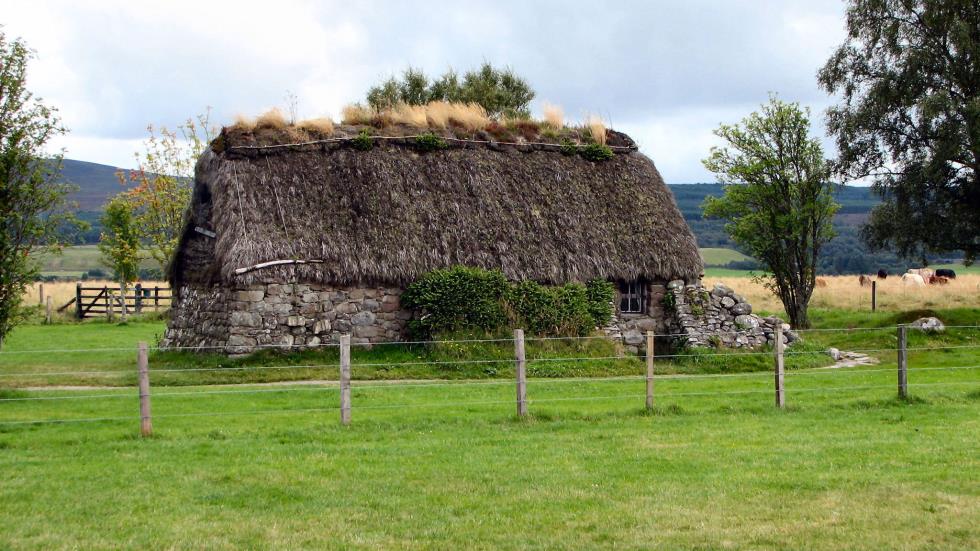
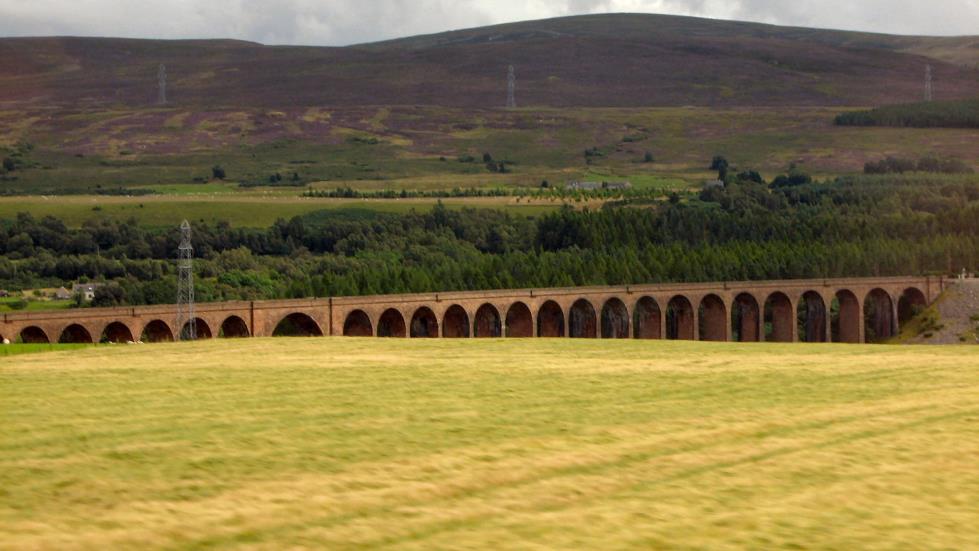 A few miles east of Culloden, sitting above the River Nairn, is the Bronze Age site of Clava Cairns (officially Balnuaran of Clava). This site defined the term Clava Cairn for similar burial sites. It is the site of three circular tombs - two enclosed passage tombs and a single cairn tomb which is open in the center. (A cairn is a stack of stones from four simple stones to the magnificent cairns at Balnuaran of Clava.) Dating to around 2000BC, the tombs are surrounded by upright Stone Circles.
A few miles east of Culloden, sitting above the River Nairn, is the Bronze Age site of Clava Cairns (officially Balnuaran of Clava). This site defined the term Clava Cairn for similar burial sites. It is the site of three circular tombs - two enclosed passage tombs and a single cairn tomb which is open in the center. (A cairn is a stack of stones from four simple stones to the magnificent cairns at Balnuaran of Clava.) Dating to around 2000BC, the tombs are surrounded by upright Stone Circles.
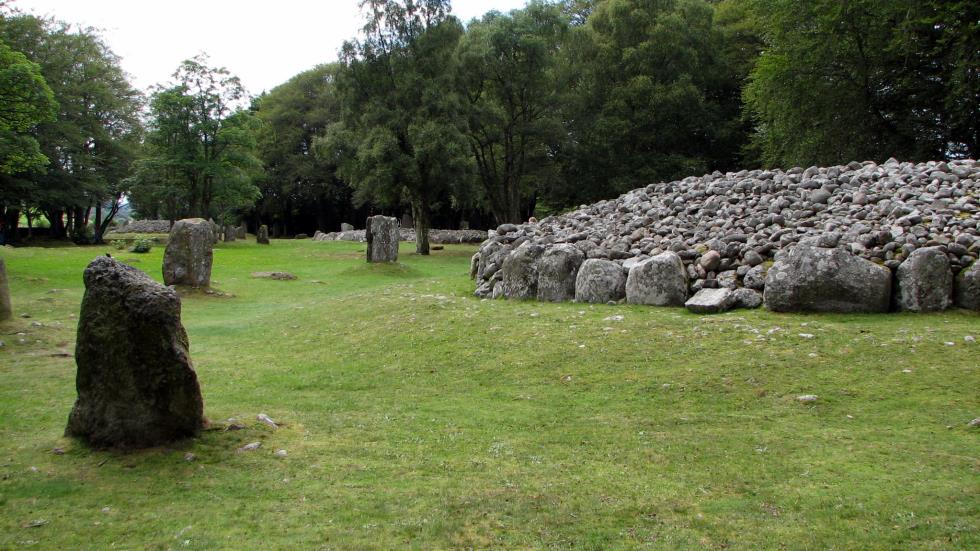
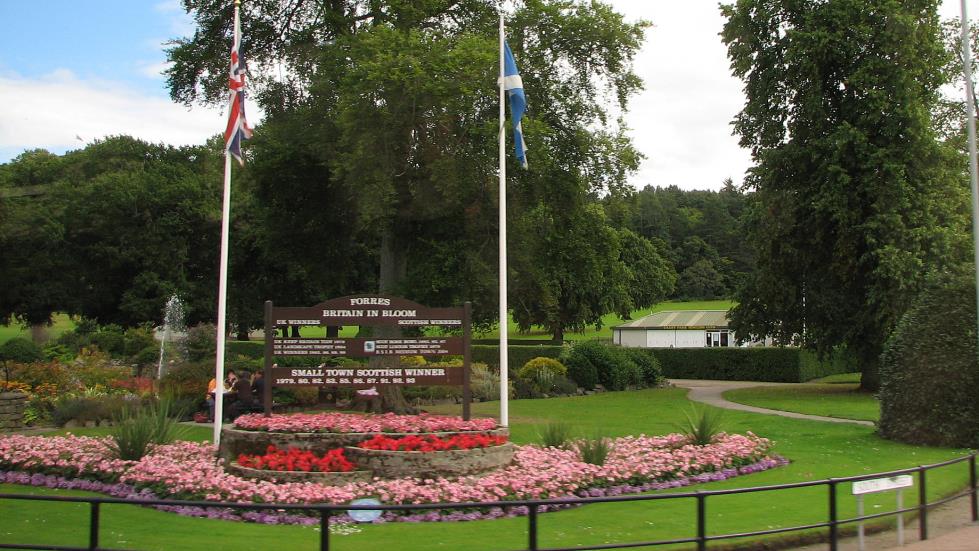
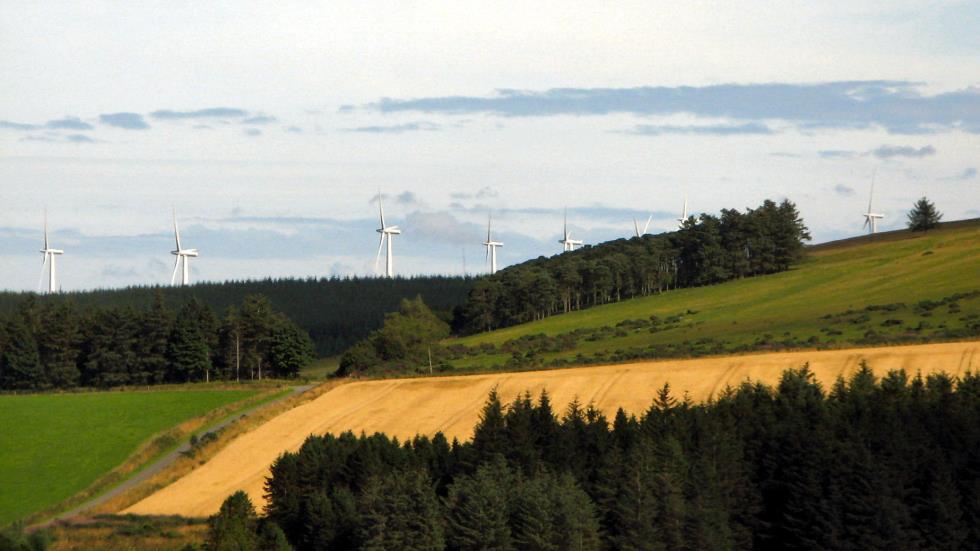
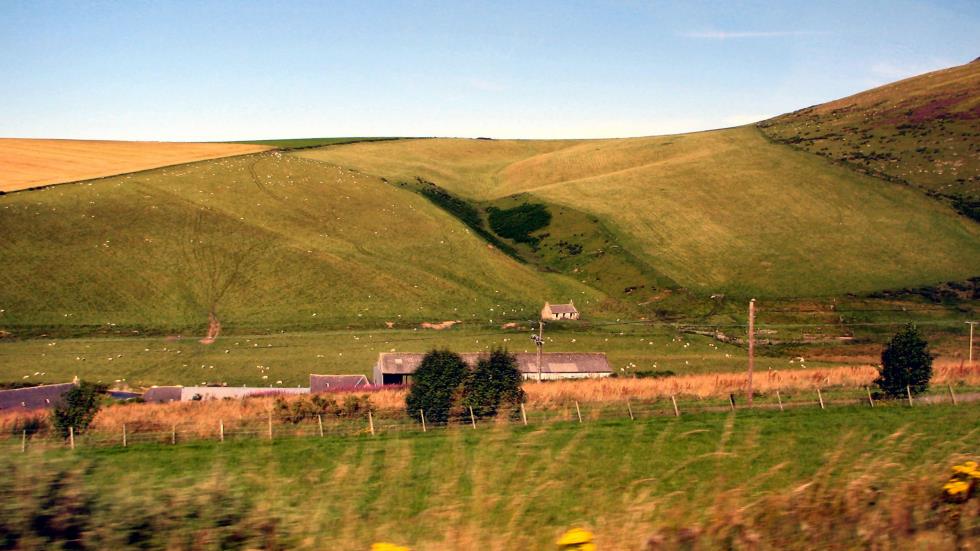
After overnighting in Inverness, today Barry and his Luxury Coach will take us to the Banchory Hotel (a Beatonite favorite) along the banks of the Royal Dee River. But the course would take several turns along the way.
Our first stop was at Culloden Battlefield. Here on 16 April 1746, the Jacobite army under "Bonnie" Charles Edward Stuart met British forces on Drummossie Moor under Prince William Augustus, the "Bloody" Duke of Cumberland where he was decisively defeated. Thus ended the "Bold 45" - the Bonnie Prince's rebellion to place his father, James Stuart, on the English throne. It began with the raising of his army at Glenfinnan, advanced as far south as Derby, England, within 50 miles of London. Due to several circumstances, including the lack of French troops, but probably more due to the two English armies that were advancing on them, the Scots retreated to Inverness and the subsequent defeat at Culloden. It was the last land battle fought on British soil.
With his loss at Culloden, Charlie spent the next five months fleeing with the British Army close on his tail. With the help of Flora Macdonald, dressed as one of her handmaids, they fled to Skye and on 19 Sep he boarded a French ship, never again to return to Scotland.
 The Banchory
The Banchory